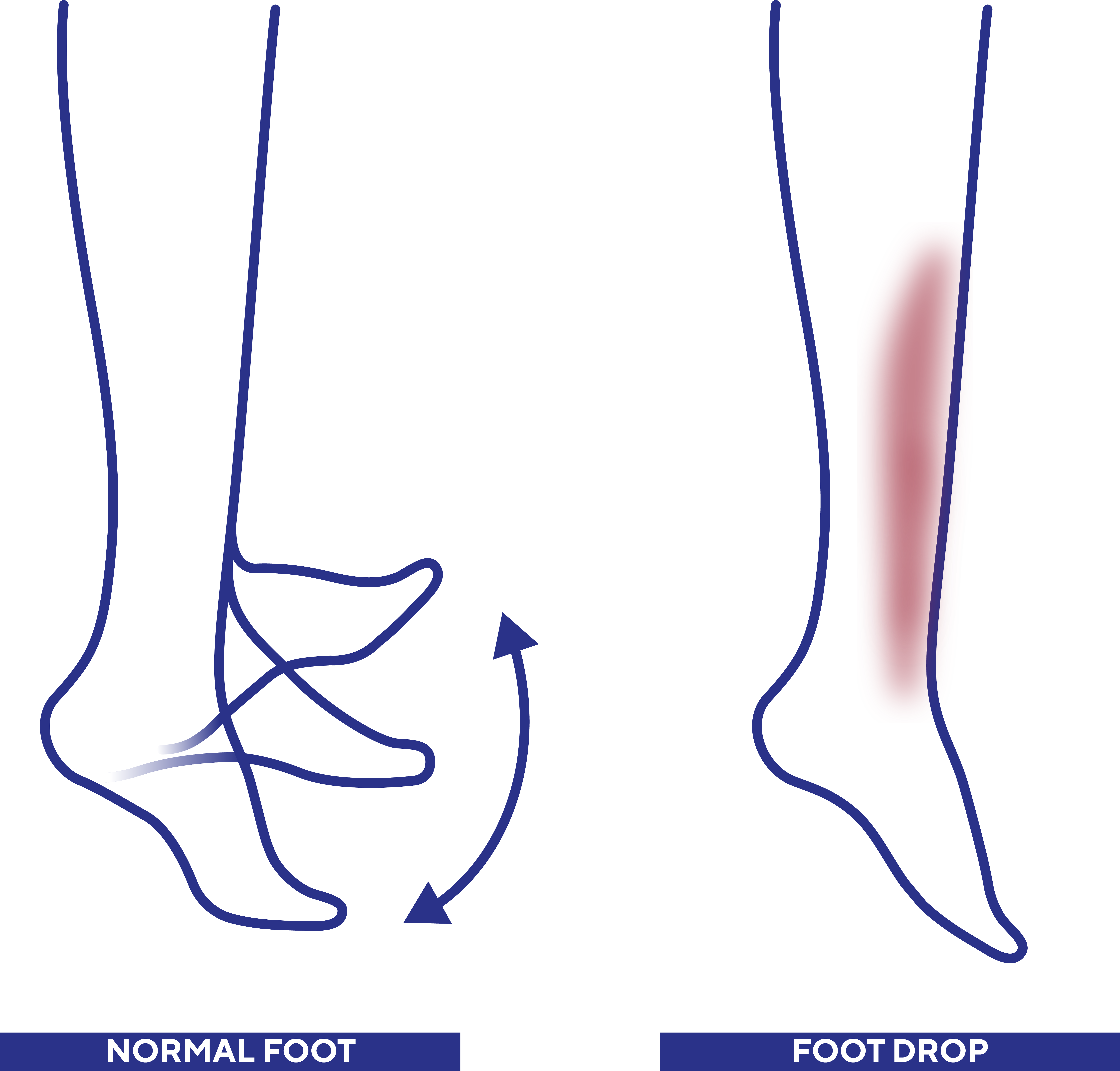All about foot drop
Solutions exist to compensate for walking disorders. Let’s take a closer look at what foot drop is as well as the bracing solutions available.

If you're struggling with foot drop, we're here to help you gain a better understanding of this condition and discover the available solutions.
It is a symptom that can affect anyone and interfere with walking while increasing the risk of falling1. It can stem from various causes2, 3, 5 such as neurological dysfunction (stroke, multiple sclerosis...), muscular dysfunction (muscular dystrophy...), or trauma (severed nerve...). It is important to note that foot drop is a symptom rather than a disease. For more information on the nervous system, see our article "Understanding the neurological system".
When you have foot drop, you may find it challenging to walk properly as your foot tends to point downward. This happens because the muscles responsible for lifting the front part of your foot are weakened or paralyzed. This limitation can lead to falls and reduce your walking speed.
Foot drop - also known as steppage - can affect either or both feet. It can be temporary or permanent.
The treatments1, 3, 4 for foot drop will depend on the origin of the symptom, whether it is neurological, muscular, or traumatic. Whatever the treatment is, the goal remains the same: to allow the patient to regain maximum mobility and to help them lift their foot. Here is what can be proposed to you:
- Exercises: initially carried out with the help of a healthcare professional (e.g., a physiotherapist), these helps to strengthen the leg muscles in order to improve the walking movement.
- Orthopaedic devices: an Ankle-Foot Orthosis (AFO) is positioned in or on the shoe and lifts the foot. For more information on existing orthopaedic devices, see our article “AFOs, an effective solution”.
- Nerve stimulation: the damaged nerve is stimulated by sending small, low-voltage electrical impulses to restore the transmission of information.
- Surgery: may be an alternative in some cases, to repair muscles or tendons or even to free a pinched nerve.
Remember, it's crucial to consult with a healthcare professional who can provide personalized advice and recommend the most suitable treatment option for you. We're here to support you on your journey to regain mobility and enhance your quality of life.